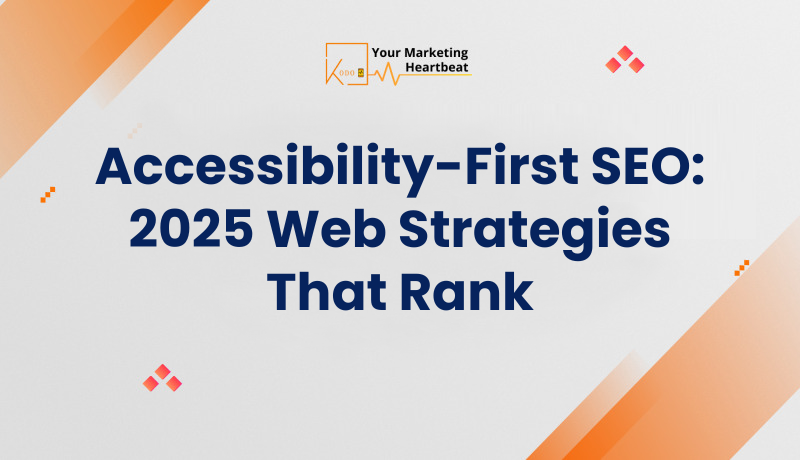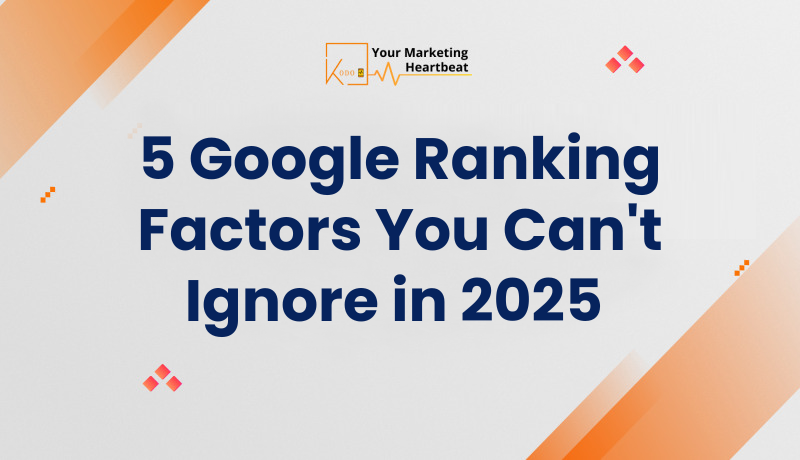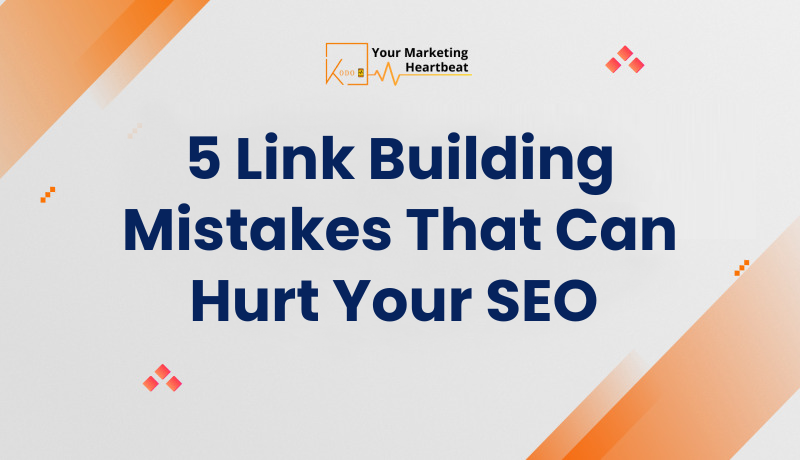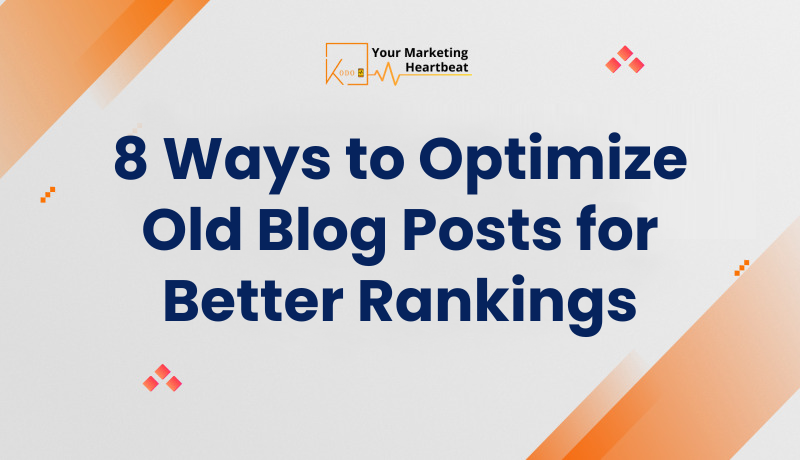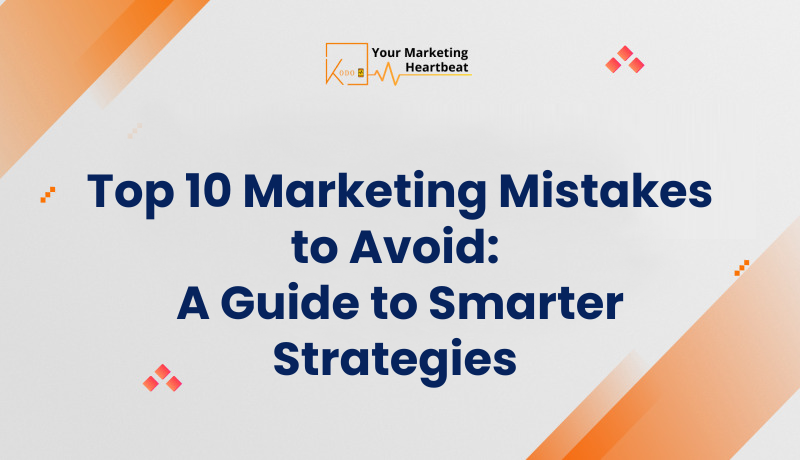
10 Critical Marketing Mistakes to Avoid for Smarter Strategies
Marketing mistakes can significantly impact a company’s growth and profitability. Studies show that businesses lose up to 30% of their marketing budget due to preventable errors in strategy and execution. These costly missteps affect both small businesses and large corporations, making it essential for marketers to identify and avoid common pitfalls in their campaigns.
This comprehensive guide examines ten critical marketing mistakes that companies frequently make in their digital marketing efforts. Readers will learn practical strategies for improving their SEO practices, content marketing approaches, and customer retention methods. The article also explores effective ways to conduct competitor analysis, maintain brand consistency, and adapt to market changes while measuring results effectively.
1. Not Defining Clear Marketing Goals
Setting clear marketing goals forms the foundation of any successful marketing strategy. Research shows that marketers who establish well-defined goals are 376% more likely to report success in their campaigns 1. However, a concerning 47% of businesses employ digital marketing tactics without a defined strategy 2.
Impact on strategy
Operating without clear marketing objectives creates a ripple effect throughout the organization. Companies often waste valuable resources on unproductive activities when goals remain undefined. Marketing campaigns launched without specific objectives lead to poor returns on investment and missed opportunities in the competitive landscape 3.
Setting SMART goals
The SMART framework provides a structured approach for creating relevant and actionable marketing goals:
- Specific: Define clear, unambiguous objectives
- Measurable: Identify quantifiable outcomes
- Attainable: Set challenging but achievable targets
- Relevant: Align with company vision
- Time-bound: Establish clear deadlines
Aligning goals with business objectives
Marketing goals must directly support overall business objectives through a top-down hierarchy. For instance, if a company aims to increase European revenue by 30%, marketing should focus on generating more leads in that region 4. This alignment ensures marketing efforts contribute meaningfully to business growth while demonstrating the strategic importance of marketing initiatives to leadership.
Regular goal review and adjustment are essential for maintaining effectiveness. Companies should conduct marketing audits to evaluate current strategies against business objectives, analyzing data from previous campaigns to make meaningful decisions for long-term success 5.
2. Neglecting Customer Research
In today’s competitive business landscape, customer research has become a fundamental necessity for success. Research shows that businesses leveraging customer behavior data outperform their competitors by 85% in sales growth 6.
Importance of customer insights
Understanding customer needs and preferences is crucial for effective marketing strategies. Studies indicate that 6 out of 10 marketers are actively using consumer research to drive their decisions 7. This data-driven approach helps companies create more targeted campaigns and develop products that truly resonate with their audience.
Methods for gathering customer data
Companies can collect valuable customer insights through multiple channels:
- Customer feedback and surveys
- Transaction history analysis
- Customer interviews and focus groups 8
Applying research to marketing strategies
Implementing customer research in marketing strategies leads to more informed decision-making. More than three-quarters of consumers express frustration with irrelevant marketing 9, highlighting the importance of data-driven personalization. Companies that conduct thorough market research can better predict product success, identify untapped opportunities, and optimize their marketing efforts after launch 7.
When businesses skip proper customer research, they risk developing products that miss the mark and waste valuable resources on ineffective marketing campaigns 10. By understanding customer behavior patterns and preferences, organizations can create more targeted, effective marketing strategies that drive growth and maintain competitive advantage.
3. Ignoring Competitor Analysis
Competitive analysis serves as a cornerstone of successful marketing strategy, with 89% of customers willing to switch to competitors if companies don’t meet their expectations 11.
Benefits of competitor research
Organizations that regularly conduct competitive analysis gain significant advantages:
- Identify market gaps and opportunities
- Understand competitor strengths and weaknesses
- Develop unique selling propositions
- Track industry trends effectively 12
Tools for competitor analysis
Modern technology offers affordable solutions for comprehensive competitor tracking. Companies can access powerful analysis tools for under $300 monthly 13, including:
Leveraging competitive insights
Effective competitor analysis helps companies make data-driven decisions. Organizations using competitive intelligence are 36% more likely to see revenue growth 14. Companies should focus on analyzing both direct competitors offering similar products and indirect competitors serving the same customer needs 15. This comprehensive approach enables businesses to identify unique market positions and develop strategies that effectively differentiate their offerings.
Regular monitoring and analysis of competitors’ activities provide valuable insights for strategic planning. Companies conducting quarterly competitive analyzes report better market positioning and increased ability to adapt to industry changes 12.
4. Inconsistent Brand Messaging
Brand consistency stands as a crucial differentiator in today’s crowded marketplace. Research indicates that consistent brand presentation across platforms increases revenue by 23% 16, yet many organizations struggle to maintain unified messaging.
Importance of brand consistency
Companies with strong and consistent branding are 20% more successful than those with weak or inconsistent messaging 17. The impact of inconsistent branding manifests in several ways:
- Decreased customer trust and recognition
- Confusion in brand perception
- Diminished market positioning 18
Creating brand guidelines
A comprehensive brand style guide serves as the foundation for consistent communication. This document should outline:
Maintaining brand voice across channels
90% of customers expect a consistent experience across all marketing platforms 19. Organizations must ensure their brand voice remains steady whether communicating through social media, email marketing, or traditional advertising channels. Regular monitoring and feedback collection help maintain this consistency, while centralized asset management tools ensure proper resource utilization 16.
Companies that maintain consistent branding across all touchpoints demonstrate professionalism and reliability, leading to increased customer confidence and brand recognition 17. This consistency extends beyond visual elements to encompass messaging tone, values, and customer experience at every interaction point.
5. Overlooking Mobile Optimization
The mobile revolution has transformed how users interact with digital content. Recent data shows that 60% of the world’s web traffic comes through mobile devices 20, making mobile optimization a critical factor for marketing success.
Mobile usage statistics
The shift toward mobile browsing is undeniable. 97.6% of internet users aged 16-24 own smartphones 20, and 98.1% access the internet on their phones 21. For e-commerce, the impact is particularly significant:
Mobile-first design principles
Mobile-first design prioritizes the smartphone user experience. Key principles include:
- Minimalist layouts with essential content
- Fast-loading pages and compressed media
- Touch-friendly navigation elements 22
Testing for mobile responsiveness
Responsive testing ensures seamless functionality across devices. 75% of retail site visits now come from smartphones 21, emphasizing the need for thorough testing. Companies should verify content loading speed, navigation usability, and proper display of images across different screen sizes 23.
Organizations implementing mobile-first strategies see significant benefits, as 92% of smartphone users who search on their devices make related purchases 21. This demonstrates how avoiding mobile optimization mistakes directly impacts conversion rates and business growth.
6. Neglecting SEO Best Practices
Search Engine Optimization (SEO) remains a critical factor in digital marketing success, with studies showing that 68% of online experiences begin with a search engine 24.
Impact of SEO on visibility
Website visibility directly correlates with search engine ranking, as the first page of Google captures 71% of search traffic clicks 25. Companies implementing proper SEO practices experience significant benefits in organic traffic and brand awareness 26.
Key SEO techniques
Essential SEO practices that drive results include:
- On-page optimization with relevant keywords
- High-quality, original content creation
- Mobile-friendly design implementation
- Technical optimization for site speed
- Strategic internal and external linking 27
Keeping up with algorithm changes
Google’s algorithm undergoes frequent updates, with approximately 500-600 changes annually 28. The impact of these updates can be significant:
Organizations must stay informed about these changes, as websites following current SEO best practices are 376% more likely to achieve success in search rankings 24. Companies that neglect SEO updates risk significant drops in visibility and traffic, potentially losing valuable market share to more adaptable competitors 30.
7. Focusing Too Much on Acquisition vs. Retention
Many businesses make the costly mistake of prioritizing customer acquisition while overlooking retention. Studies show that it costs up to 5 times more to acquire new customers than to retain existing ones 31.
Customer lifetime value
Customer lifetime value (CLV) serves as a crucial metric for business growth. Companies that effectively track CLV can identify valuable trends in customer data 32. Research indicates that a 5% increase in retention rates may lead to a profit increase of up to 95% 31.
Retention marketing strategies
Effective retention strategies yield significant returns:
Balancing acquisition and retention efforts
Experts recommend allocating approximately 60% of resources toward customer retention and 40% toward acquisition 33. This balance proves particularly crucial as customer acquisition costs have risen by 222% since 2013 34.
Companies implementing balanced strategies benefit from:
- Increased customer spending patterns 32
- Higher referral rates from satisfied customers 35
- Enhanced customer feedback and insights 36
For sustainable growth, businesses should focus on both acquiring new customers and nurturing existing relationships. Research shows that existing customers spend 30% more on new products than first-time buyers 35.
8. Failing to Measure and Analyze Results
Effective measurement and analysis form the backbone of successful marketing campaigns. According to PwC, organizations heavily relying on data-driven decisions are three times more likely to report significant improvements in decision-making 37.
Importance of data-driven decisions
Only 38% of US executives measure their marketing efforts 38, despite evidence showing that measurement reduces executive dissatisfaction by 12% 38. Companies that track marketing metrics plan to invest 41% more in their marketing budgets compared to those that don’t measure results 38.
Tools for marketing analytics
Modern analytics platforms offer comprehensive solutions for tracking marketing performance:
- Marketing attribution tools for revenue tracking
- Social media analytics for engagement measurement
- Call tracking analytics for offline conversion monitoring 39
Companies implementing proper analytics tools report 89% higher strategic metric usage 40. These solutions help marketers identify opportunities, optimize strategies, and demonstrate clear ROI for their marketing investments 41.
9. Overlooking the Power of Content Marketing
Content marketing emerges as a cornerstone of modern digital strategy, with businesses discovering its remarkable cost-effectiveness. Research shows that content marketing costs 62% less than traditional marketing methods and generates approximately three times as many leads 42.
Benefits of content marketing
Organizations implementing content marketing strategies experience substantial advantages:
- Annual organic traffic growth that is 7.8 times higher than non-content focused businesses 42
- Enhanced social media following and exponential brand building 42
- Improved customer service efficiency through informative content 42
Creating valuable content
Quality content serves as the foundation for organic search success and website traffic growth. Companies that consistently create valuable content receive requests from high-authority websites for backlinks 42. The most effective content types include.
Content distribution strategies
Strategic content distribution amplifies marketing impact beyond creation. Companies that use a content calendar are 60% more likely to report positive effects from their marketing efforts 43. Successful distribution involves maintaining consistency across channels while adapting content format for each platform’s unique requirements 44.
Businesses implementing comprehensive content strategies report 89% higher strategic metric usage 40, demonstrating the significant impact of well-executed content marketing on overall business performance.
10. Not Adapting to Market Changes
In the rapidly evolving digital landscape, businesses that fail to adapt their marketing strategies risk becoming obsolete. Studies show that companies with agile marketing capabilities are 23 times more likely to acquire customers 45.
Importance of agility in marketing
Agile marketing enables organizations to swiftly respond to market changes and emerging opportunities. Data-driven organizations are six times more likely to retain customers 46 through rapid adaptation to changing consumer preferences. Companies implementing agile marketing report significant advantages:
Monitoring industry trends
Effective trend monitoring requires a systematic approach. Companies that actively monitor market trends report higher customer satisfaction rates 46. Key monitoring strategies include:
- Subscribing to industry reports and analytics
- Following influential industry leaders
- Implementing real-time feedback mechanisms 46
Strategies for quick adaptation
Organizations must foster a culture of continuous improvement to maintain market relevance. Companies that embrace marketing agility gain significant competitive advantages 45, particularly in capitalizing on emerging opportunities. Success requires implementing short, focused marketing campaigns while promoting cross-functional collaboration across departments 45.
Businesses that fail to adapt risk facing serious consequences, including reduced profitability and declining market share 47. The ability to quickly adjust marketing strategies based on real-time data and emerging trends has become essential for maintaining competitive advantage in today’s dynamic marketplace 48.
Conclusion
Marketing success demands careful attention to fundamental principles and strategic execution. Studies consistently show that businesses implementing data-driven strategies while avoiding common pitfalls achieve significantly better results. Companies that maintain clear goals, understand their customers, analyze competitors, and ensure brand consistency across channels position themselves for sustainable growth. These core practices, combined with proper mobile optimization and SEO implementation, create a strong foundation for marketing success.
Strategic marketing requires continuous evaluation and adaptation to changing market conditions. Organizations that balance customer acquisition with retention while measuring their results make better decisions and achieve higher returns on investment. Content marketing proves particularly effective, costing 62% less than traditional methods while generating triple the leads. Smart businesses recognize these principles as essential elements of their marketing strategy, making necessary adjustments to stay competitive and meet evolving customer needs.
